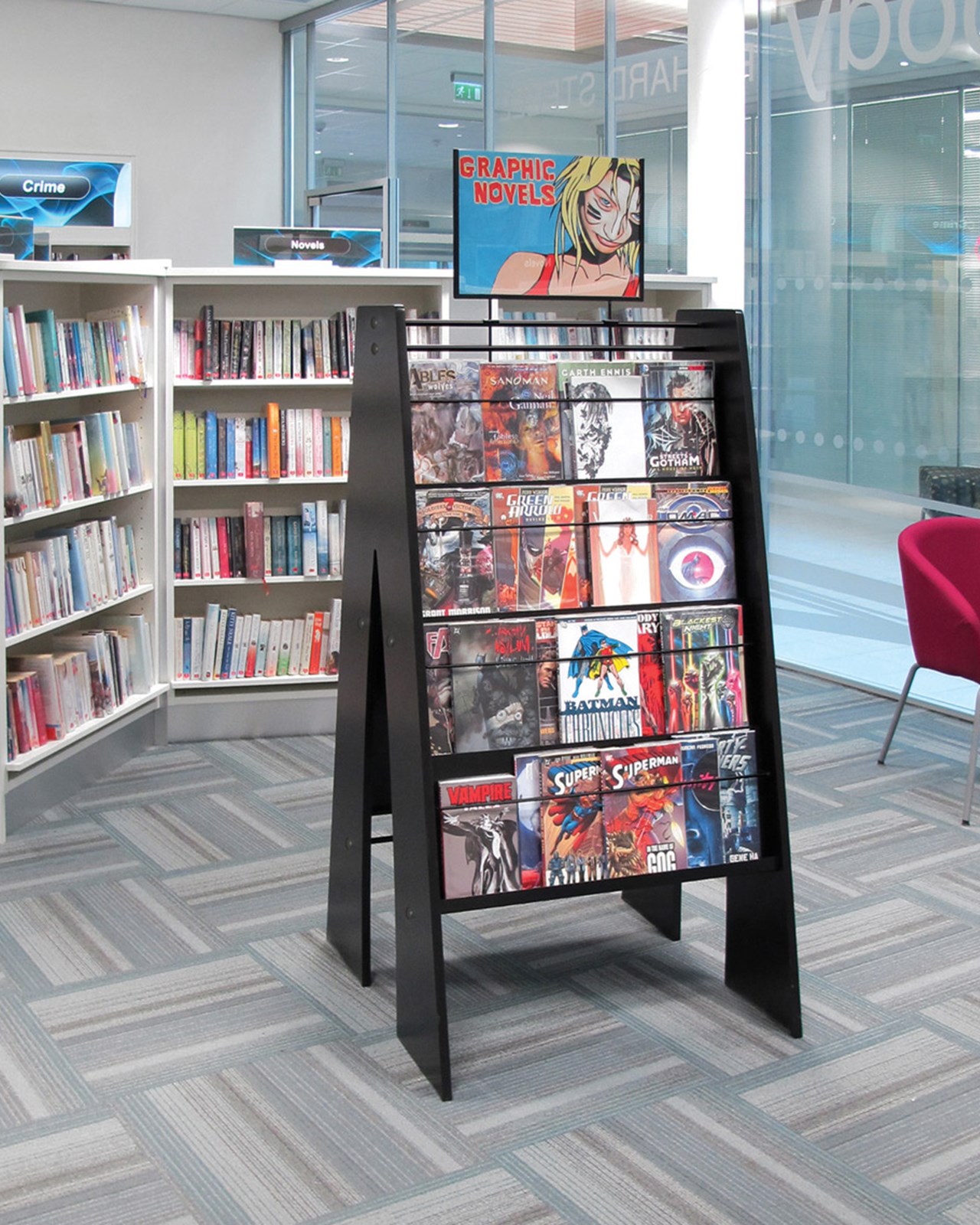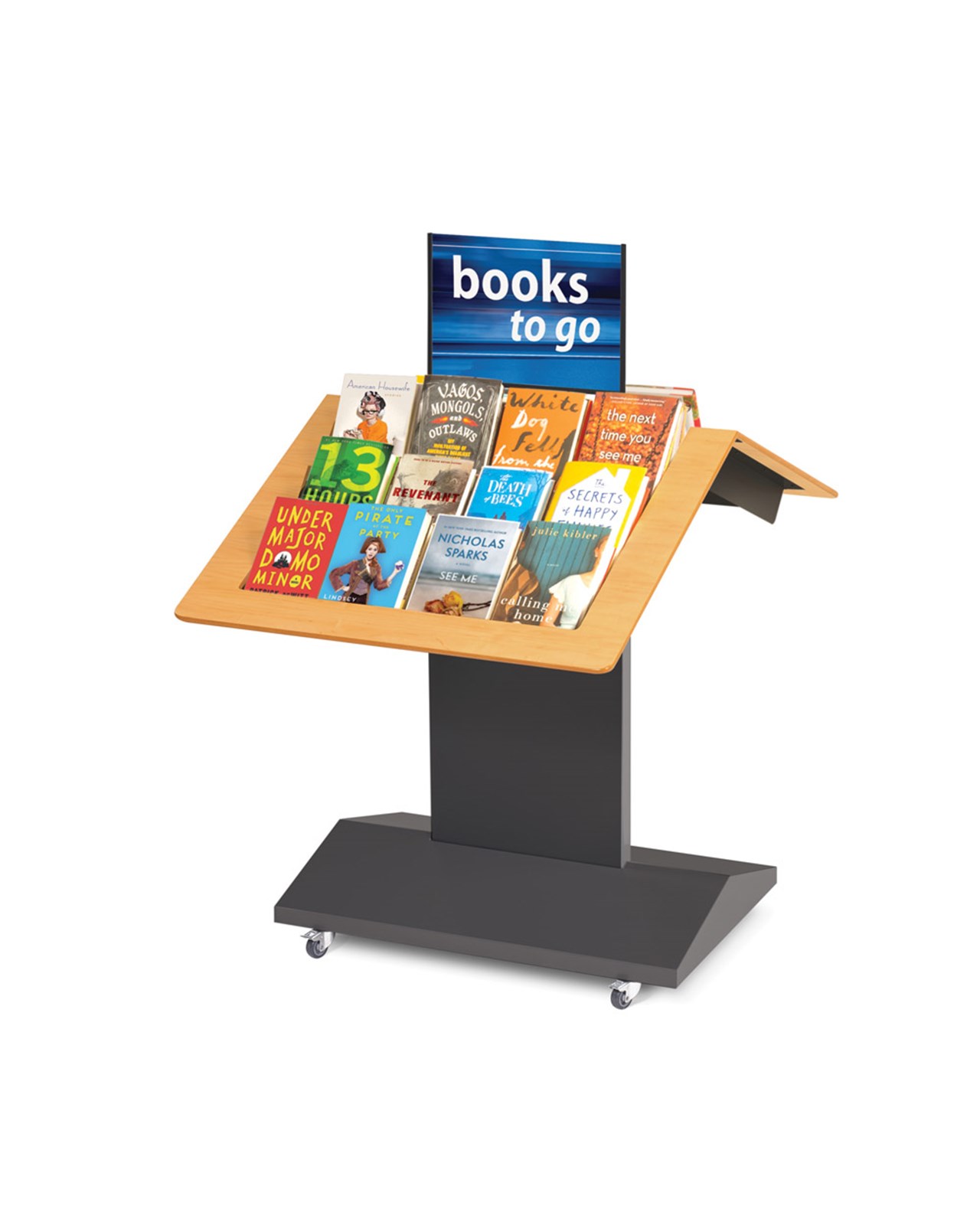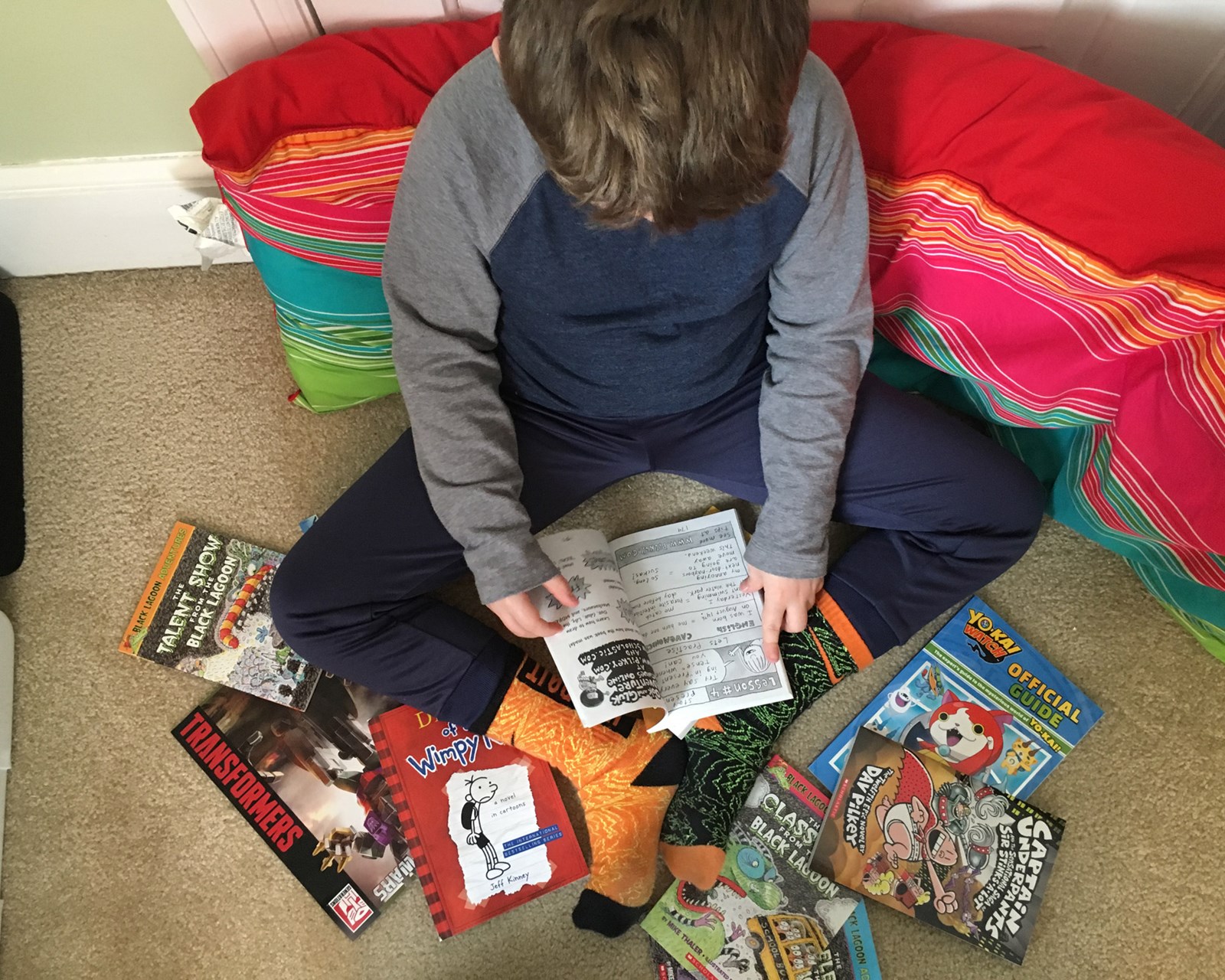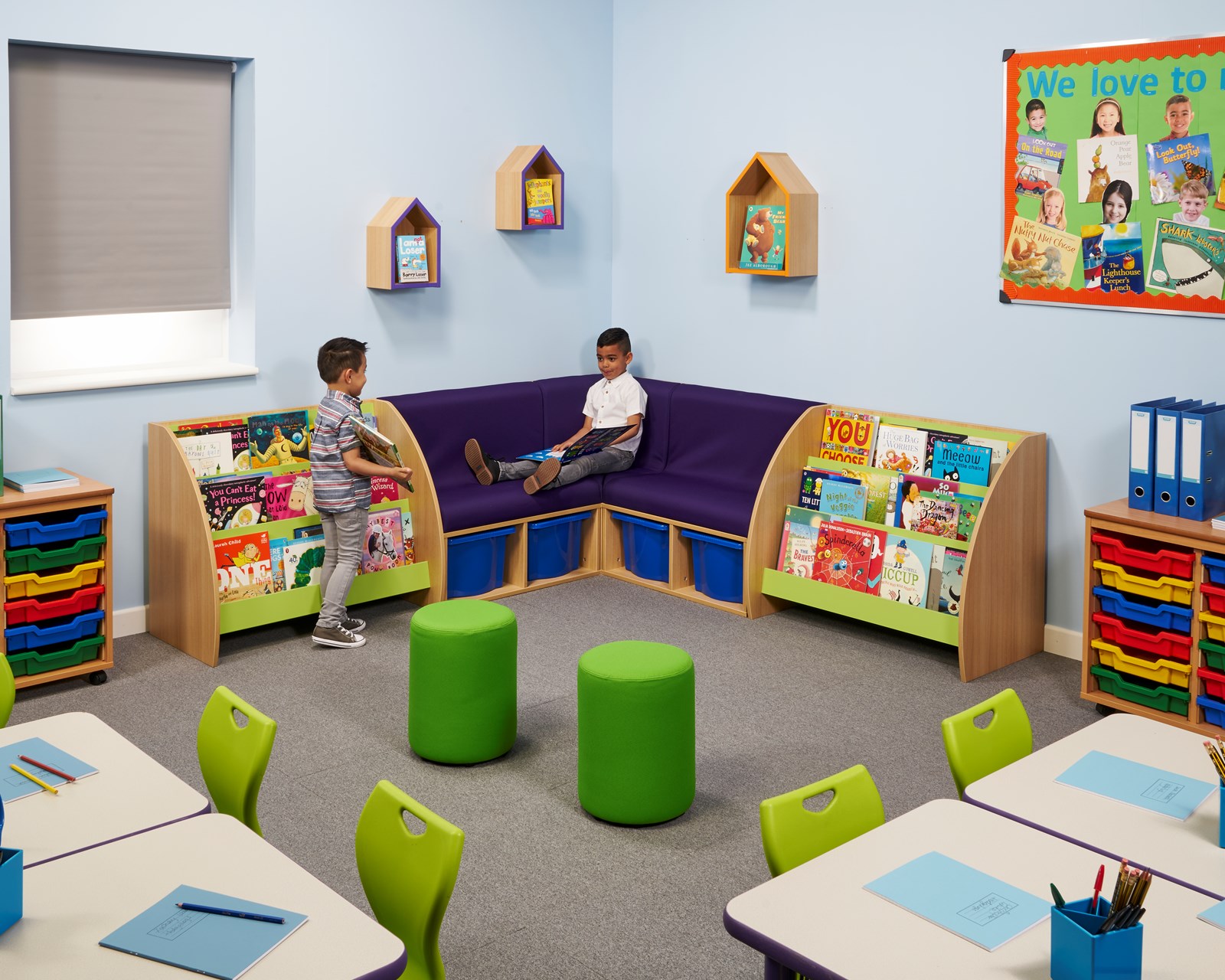How to Boost your Circulation Stats
The role of libraries has moved from passive provision of books on shelves to active engagement with readers through conversations, projects and displays.
Take a fresh look at what you are offering your patrons and how to improve your offering with these ideas. You don’t have to tackle them all at the same time but it is worth trying to implement all of them over a period of time. Small changes and tweaks can make a difference; adopting all of these ideas will guarantee you positive results.
1. Find your best spot
Brands in stores pay for display space at different rates as some locations will perform better than others. Where’s the top spot in your library? It’s usually an area a bit further in from the entrance - not right at the doorway as people are still adjusting to coming in. It’s a space which you have clear views of as you approach. It won’t be right next to the staff desk as it needs enough room to linger in so people don’t feel squashed, in the way or hurried to move on. Look for an area where people will naturally slow down and start looking around.
Once you’ve identified the best spot, check out what’s in it at the moment? Many libraries will find this valuable space is occupied by the photocopier! Community-minded libraries are quick to give over their best space to anyone else who wants it – displays from other municipal departments or voluntary organizations. Copiers, booksales and partner displays are all fine things to offer but they don’t need your best space. Move them further back in the library and reclaim your best space for a fantastic book display.
2. Display books face-out and watch the results
Bookstores know that 50% of shoppers buy the first thing they pick up. That’s why they give over so much of their selling space to face-forward display. Click here for a simple quick way to create face-out display in a library.
Opening the Book recently ran a MOOC in conjunction with the ALA, where librarians conducted two sets of observations made before and after introducing merchandizing to an area of shelving. Before the face-out display was installed, 9% of patrons checked out a book from the shelving. After applying face-out display to the shelving, 26% of patrons checked out a book from the shelving.
3. Sell the sizzle, not the sausage
Patrons don’t come to visit libraries for paperbacks or hardbacks, e-books or audio. They don’t come for CDs or DVDs or reference books – or even computers. They come for the experience they can access through all these things. Click here to see a selection of promotional graphics packages that can be used in any library setting to present an exciting, professional reading experience. Read more. ..
4. Make choosing easy
The choice in a library can be overwhelming. If you haven’t much time, and you’re not sure what you’re looking for, where do you start? Researchers in both psychology and retail marketing have proven that customers find smaller, well-presented choices more manageable. You can listen to Sheena Iyengar on her famous jam experiment here. Then apply the lesson to your library!
5. Angle displays to catch traffic
People start browsing a display from 5 yards away. Make sure your display units are positioned so they are directly in the sightline as patrons enter a space. Stand back and check what you see as you come in – if it’s the side of the display, turn the unit to meet the visitor face-on. Don’t be afraid to place displays in the center of aisles and entrances – this is where they will get most use. There is usually plenty of space to go either side to get round. Displays at the side of a space often get walked past unnoticed. Have the courage to go center-stage, then watch and be amazed at how many people pull up for a quick look.
6. Top up frequently
If a display is working well, it will start to empty quite fast. Librarians sometimes point to an empty unit as evidence of success. Yes, it’s evidence of past success but it’s a wasted opportunity in the present! If it’s working well, keep it filled up at all times. Did you know that if a display falls below 70% full, usage drops off? People think the best has gone, it’s been picked over. For more fascinating facts about consumer behaviour read Paco Underhill, especially his first book Why we Buy - The Science of Shopping.
7. Learn to merchandize
Merchandizing is the term used in retail to describe presenting the product so it sells. In libraries we have nothing to sell but ‘a good read’ and that’s all free. But we can learn so much from how retailers do it. We can then adapt retail techniques to library ends – not to sell the biggest bestsellers but to open up reading choices, to draw attention to less-well known books or new writers.
Merchandizing is a skill which you can learn and practice. Here’s the equivalent of a one-day training course but it’s all online so you can do it when and where you like. There are fun exercises to try out online and then tasks to apply in your own library. You get to discuss with others doing the same course across the world and you receive personal feedback from an Opening the Book mentor. See Merchandizing the Bookshelves.
8. Purge your books
Making the time to purge old past their ‘sell-by’ books isn’t easy but the rewards can be enormous. Make room for books that patrons really want to see. Your whole collection will spring into relief if you get rid of the tired and worn books. Every time you purge, patrons check out more and will tell you they are pleased you have so many new books. Often, you don’t have that many new books but the books you have look so much better, patrons think they must be new!
9. Harness the pester power
Create a children’s space that will have children pestering their parents to visit. If children associate reading with fun they are more likely to want to check out the books. Click here for some ways to add the “wow” factor to your space.
Make it easy for children to see, touch and take books, encouraging them to make independent choices and to develop a sense of themselves as readers.
10. Let patrons take ownership of their library
Most readers love to give their opinion on a book they’ve just read, whether it’s good or bad. Let your patrons take ownership of their library and encourage them to leave a review of their latest read. You can provide sticky notes and a board or wall to put them on, add comments to your website or simply talk to people, write down what they say and then tweet or Facebook it. One reader telling another about a great book is the simplest and most powerful promotional tool in existence – and libraries have lots of opportunities to harness it.
 Canada
Canada United States
United States United Kingdom
United Kingdom






